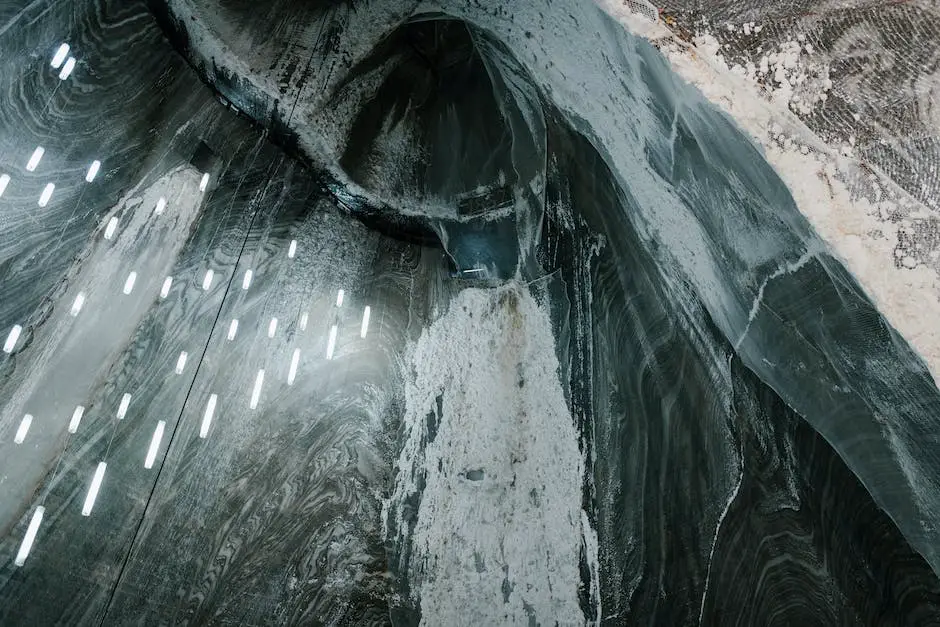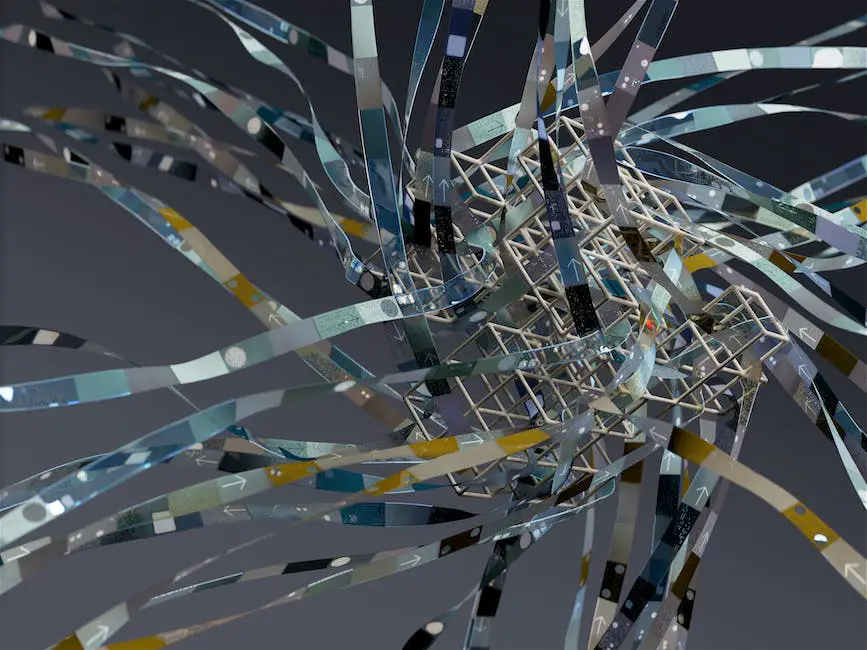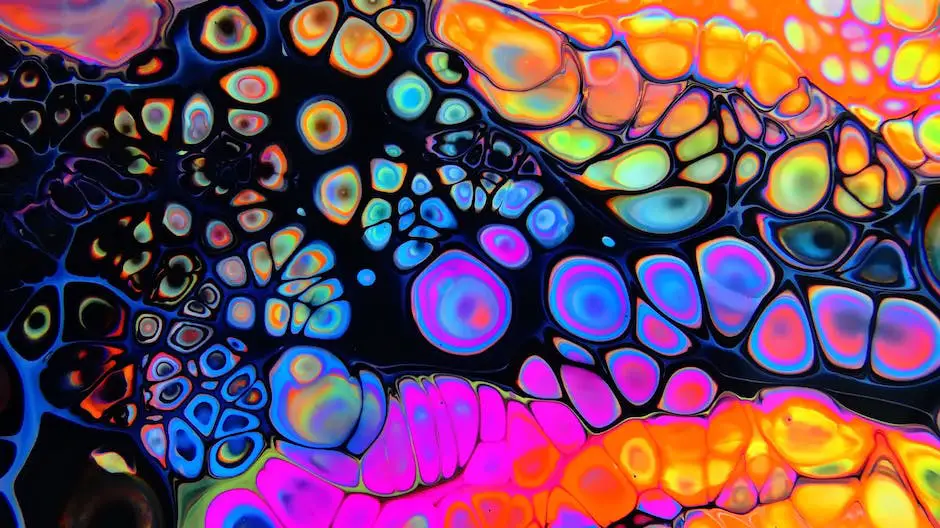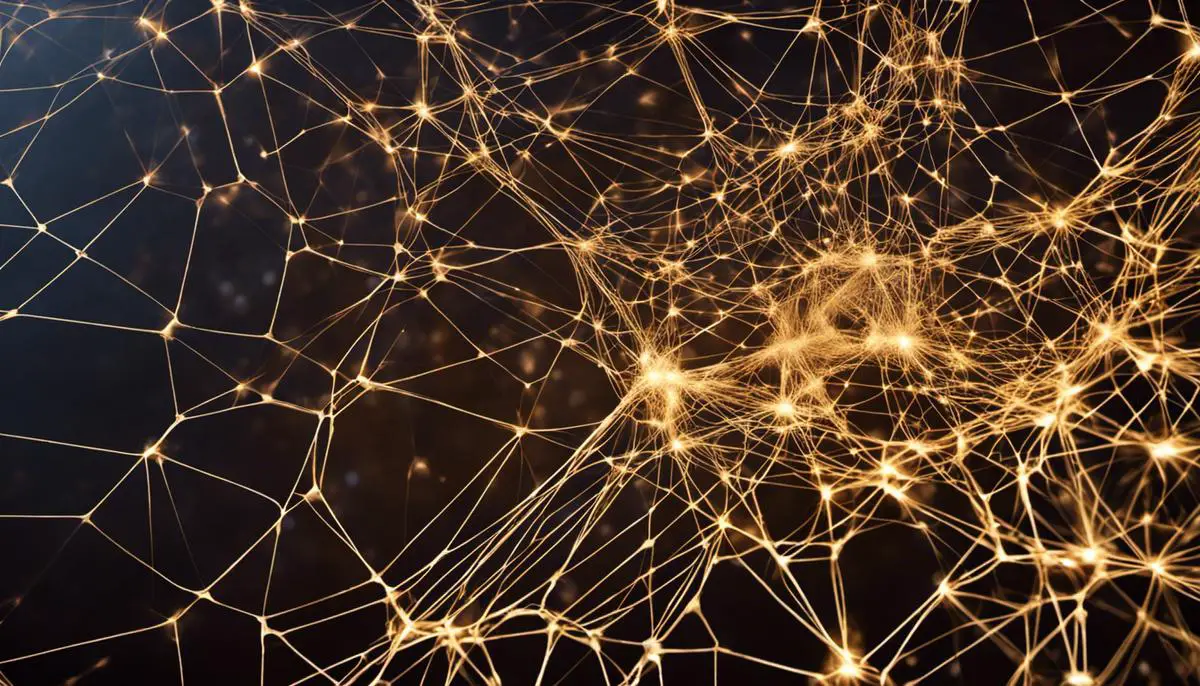The realm of Artificial Intelligence (AI) is continually evolving, birthing innovative solutions that remarkably transform various sectors. Among these groundbreaking inventions is Stable Diffusion AI – a revolutionary approach to generating realistic images. This novel technique leverages the diffusion process to generate strikingly realistic images.
The growth of Stable Diffusion AI in image creation comes as a disruptive wind, overcoming the high computational costs associated with traditional models such as Generative Adversarial Networks (GANs) and Variational Autoencoders (VAEs).
Taking a deep dive into understanding this fascinating and practical technology, this discourse navigates the landscape of Stable Diffusion AI, its application in creating realistic imagery, and its overall benefits in comparison to other image generation models.
Contents
Understanding the concept of Stable Diffusion AI
Defining Stable Diffusion AI
Stable Diffusion is a powerful, state-of-the-art system that uses AI to generate high-quality, realistic images. This technology is founded on the principles of Diffusion Models; a category of generative models that leverage the diffusion process to produce new and coherent instances from known data sets. Stable Diffusion AI has gained significant traction in recent years, especially in fields like digital art, computer graphics, and social media platforms, where the demand for realistic and unique visual content is ever-increasing.
Origins of Stable Diffusion AI
The concept of Stable Diffusion AI is rooted in the broader field of deep learning and artificial intelligence. It works on the theoretical foundations laid by stochastic calculus and Bayesian inference, specifically the Fokker-Planck equation and the Langevin dynamics, respectively.
However, the adaptation of these principles in image generation meant creating an optimization algorithm that balances the trade-off between sample quality and computational efficiency. Several novel techniques have been proposed over the years, with the most recent one being Denoising Score Matching for stable and efficient training.
Underlying Mechanism of Stable Diffusion AI
The prime operations in Stable Diffusion AI can be divided into two phases – the forward and the reverse. The forward phase is akin to the diffusion of ink spreading in water. Starting from a real image, Gaussian noise is gradually added to the image over discrete time steps until it transitions into unstructured noise. This is also known as the corruption process. This phase embodies the principle of diffusion wherein the data is scattered across the multi-dimensional space.
The second phase is the reverse. It starts with the noisy image from the end of the forward phase, then applies a series of reverse transformations that gradually remove the noise to recover the original image or a plausible version of it. The iterations are driven by a neural network trained to predict the dynamics of these transformations.
An Introduction to Realistic Image Creation using Stable Diffusion AI
In the realm of image creation, Stable Diffusion AI emerges as an influential tool due to its multiple advantages. This technology is capable of producing top-notch, diverse, and unique images, the quality of which can be enhanced to a remarkable level of realism through meticulous control of specific model parameters.
Such capabilities make it a crucial asset for creatives and content developers. This technology even goes to the extent of imbuing images with varying aesthetics, or reproducing the style of specific artists, thereby paving the path for unique image stylization and manipulation that would be arduous or impractical to achieve manually.
The scope of Stable Diffusion AI extends beyond the basic image generation tasks and ventures into semantic editing, interpolation, and inversion. Semantic editing allows the modification of certain image attributes, such as altering the apparent age, gender and so on, while preserving the identity of the original image. Interpolation facilitates seamless transitions between different images. Inversion is used to recover the latent variables from the observed data.
In summary, Stable Diffusion AI opens up new horizons in the field of image generation, offering an unexplored realm of creativity and manipulation in digital content.
Role of Stable Diffusion AI in Image Creation
Digging Deeper into Stable Diffusion AI
Stable Diffusion AI is a state-of-the-art technology that harnesses the phenomenon of diffusion to boost artificial intelligence applications, one of which is image creation. The process takes an image, imposes random noise, and over time, reverses the process to reproduce the original image.
It is as if the AI is learning on how to rebuild an image from a noisy version of it. This advanced technology especially excels in constructing realistic images, an integral part of machine learning known as generative modelling.
Building Blocks of Diffusion Models
Diffusion models, the backbone of Stable Diffusion AI, try to model the data distribution of the pixels in an image by successively corrupting the original image with random noise, in a process like a random walk. This is very effective as it captures high-level abstract features of the image and gradually tunes them to create an output that is noticeably similar to the original.
Advantages of Stable Diffusion AI
Stable Diffusion AI holds several advantages over other traditional methods of image creation. For starters, it is less compute-intensive, therefore making it a more efficient and viable option for large-scale applications. It maintains a high level of detail in comparison to GANs (Generative Adversarial Networks), which often struggle with intricate and high-fidelity image generation.
Quality of Images Generated
The images generated using Stable Diffusion AI are incredibly realistic, as this method is capable of handling finer details and a complex range of textures, which is often a tricky task for AI. It is also potent at grasping the structure of images, allowing it to maintain continuity and coherence in the objects depicted within the image, something which many traditional methods have often struggled with.
Applications of Stable Diffusion AI in Image Creation
Stable Diffusion AI does not just stop at creating simple or singular images. It branches out to create new instances of complex objects, such as cars and animals, while managing to maintain their structural integrity and realistic textures. It’s not only limited to static images but also has promising implications in creating video sequences – a considerably harder task due to the continuity and motion involved.
The Game-Changing Stable Diffusion AI in Image Generation
Image generation has been revolutionized by Stable Diffusion AI, a key player in the field of artificial intelligence and machine learning. This technology significantly reduces the computational power and resources required to create high-quality, ultra-realistic images. Furthermore, this reduction does not compromise the intricacy of the details or the richness of textures. Stable Diffusion AI’s potential extends beyond image generation and manipulation; it is also impactful in the wider fields of deep learning and AI.

Comparisons with Other Image Generation Models
A Closer Look at Stable Diffusion AI
Stable Diffusion AI marks a departure from traditional image generation models like Generative Adversarial Networks (GANs) and Variational Autoencoders (VAEs). Its foundation is the diffusion model, a generative model that strategically distorts an image to the point of being unrecognizable, then reconstructs it based on the distortive noise.
This unique approach preserves the integrity of the target data and produces a diverse array of images. An additional advantage of Stable Diffusion AI lies in its compatibility with parallelization, greatly reducing computational time.
Comparison with GANs and VAEs
In contrast, Generative Adversarial Networks (GANs) function on the concept of two dueling networks: a generator network that creates fake images and a discriminator network that attempts to distinguish these false images from real ones.
The characteristic adversarial process makes GANs capable of generating high-quality images, however, they are often subjected to modes collapsing where the generator creates limited varieties of samples, and suffer from instability during training.
On the other hand, Variational Autoencoders (VAEs) model the input data into a latent space, then recreate the input by sampling points from this latent space. VAEs can generate diverse samples, and the training process is stable, but the generated images are often less detailed compared to GANs as a lot of image detail can get lost in the latent space.
In a nutshell, Stable Diffusion AI strikes a balance between these models. It allows for diverse, high-quality image generation similar to GANs while maintaining a more stable training process reminiscent of VAEs.
Efficiency and Quality Output
When evaluating the computational efficiency of these models, Stable Diffusion AI comes out on top due to its inherent parallelization of the process. This means that a larger proportion of the model can be run simultaneously, resulting in faster outputs.
In terms of output quality, GANs have long been celebrated for their ability to generate realistic images. However, they frequently fail in preserving the diversity of the original dataset. VAEs maintain dataset diversity but often lack in producing high-quality images. Stable Diffusion AI leverages the strengths of both these types of models to create realistic and diverse images.
Model Efficacy in Different Scenarios
Distinct models flourish under varying conditions. For instance, Generative Adversarial Networks (GANs) typically excel in situations that necessitate high-quality images, regardless of diversity. Conversely, if diversity is the priority, coupled with the need for a stable training cycle, then Variational Autoencoders (VAEs) are often preferred.
In relation to a harmonious blend of quality, variety, computational efficacy, and stability, Stable Diffusion AI comes into play. Fusing the strengths of both GANs and VAEs, this approach demonstrates impressive potential for a vast spectrum of applications, encompassing procedures that involve creating photorealistic images. Its competency in generating a broad range of unique, high-quality images positions it as an ideal solution for tasks such as data augmentation, autonomous vehicle simulation, or digital art creation.

Challenges and Solutions in Stable Diffusion AI
Gaining Insight into Diffusion Models for Lifelike Image Creation
Diffusion models, a sub-category of AI, procure new data instances by essentially reversing a basic procedure. Pertaining to image generation, the AI ‘learns’ an image by gradually subjecting it to a noise distortion process across a sequence of stages until it morphs into complete random noise. This acquired process is then backtracked, methodically removing the noise from the image to create a sample.
Challenges in Stable Diffusion AI
While diffusion models have been quite successful in realistic image creation, they come with their own set of challenges. Perhaps the most significant is the difficulty in maintaining stability during the denoising process. The denoising process involves multiple steps and is highly non-linear; if any of these steps go wrong, the entire process could collapse, leading to unrealistic or poor-quality images.
Another challenge lies in optimizing the trade-off between image fidelity and computational cost. Diffusion models are computationally demanding. The generation process involves a forward and reverse pass for a large number of steps, and each step requires a gradient computation. This leads to long processing times, making it challenging to produce high-quality images quickly.
Additionally, training diffusion models requires large amounts of high-quality data. This computational cost can be prohibitive when working with large datasets, as is often the case in realistic image generation. Data overfitting and lack of diversity in the dataset can also result in generated images that repeat certain elements or patterns, reducing the overall realism of the images.
Solutions and Advancements
Despite these challenges, there have been significant advancements in overcoming these obstacles. Regularization techniques, for instance, have been employed to ensure the stability of the diffusion process. By controlling the rate of information flow through the network, it is possible to avoid catastrophic forgetting and ensure progressively improved quality of image generation.
Techniques such as parameter sharing and skip connections have yielded considerable success in reducing computational burden. Parameter sharing recycles computation across multiple diffusion steps, resulting in a reduction in training time without significant loss in performance. Skip connections are methods that allow the gradient to be directly backpropagated to earlier layers in the AI model, improving stability and performance.
Advancements have also been made in data augmentation to overcome the need for large datasets. Techniques such as mixing data from different classes (mixup), random cropping, and flipping can considerably diversify a dataset, improving the realism and variety of generated images.
Ongoing Research in Stable Diffusion AI
There is ongoing research in the field of Stable Diffusion AI to continually address and improve these challenges. Some of the current focus is on improving model generality, meaning that the models can learn to generate a wider variety of images from a broader dataset. Other studies are exploring ways to make diffusion models more efficient by reducing computation processing times or even to produce models that can learn in real-time.
In conclusion, Stable Diffusion AI is an innovative topic with enormous potential to completely change the landscape of realistic image generation. Despite the challenges that appear on the horizon, the opportunities it presents along with the continual advancements in this field depict an exhilarating future for AI-driven image creation.

Real World Applications of Stable Diffusion AI
Delving Deeper into the Stratas of Stable Diffusion AI
Stable Diffusion AI is a ground-breaking artificial intelligence approach that leverages sophisticated machine learning algorithms to generate lifelike images. The concept operates by emulating the process of diffusion – a principle borrowed from the realm of physics denoting the transition of particles from an area of high concentration to a zone of low concentration.
This method is applied to gradually modify an existing image until it morphs into an entirely different image. The transformation journey is managed by a machine learning model that precisely instructs the diffusion pathway, thereby enabling the generation of a wide range of distinct and high-quality images.
Stable Diffusion AI in Art and Design
In the realm of art and design, Stable Diffusion AI can support creatives by generating unique images, textures, and patterns. Artists can leverage this technology to create complex pieces of artwork, involving intricate image transitions and transformations that would be challenging to achieve manually. By providing a virtual canvas and an AI-powered brush, Stable Diffusion AI enables art that is remarkably realistic and finely detailed.
Stable Diffusion AI in Gaming & Virtual Reality
In the gaming industry, Stable Diffusion AI can be utilized to produce highly realistic imagery for game environments, characters, and props. This technology creates detailed textures, immersive backgrounds, and believable objects, enhancing the overall gaming experience. In virtual reality, Stable Diffusion AI’s potential is even greater, enabling the creation of lifelike virtual worlds that users can explore and interact with.
Stable Diffusion AI in Fashion
Stable Diffusion AI has practical applications in the fashion industry as well. It can be used to create realistic virtual clothing for fashion design, eliminating the need for physical prototypes. Designers can experiment with different fabrics, colors, and patterns in a virtual environment before finalizing their designs. This allows for a cost-effective and environmentally friendly design process.
Stable Diffusion AI in Medical Imaging
Medical imaging is another industry that is poised to benefit significantly from Stable Diffusion AI. The technology can be used to enhance the detail and clarity of medical images, like MRIs or CT scans, aiding in accurate diagnoses and treatment decisions. Stable Diffusion AI can also be used to simulate how a disease may progress in a patient based on their scans, offering clinicians a powerful tool for predictive medicine.
Unleashing the Potential of Stable Diffusion AI
As AI technology advances, the applications of Stable Diffusion AI will continue to expand. By using this technique to create highly realistic images, industries can not only revolutionize their current practices but also explore new possibilities. The widespread adoption of Stable Diffusion AI holds the promise of countless new opportunities and better outcomes across various industries.

The promise of Stable Diffusion AI lies far beyond just generating realistic images—it stands at the verge of an artistic revolution. From transforming the world of art, gaming, and fashion, to revolutionizing medical imaging, it’s undeniably creating unprecedented opportunities.
Its ability to bridge computational gaps and deliver high-quality outcomes continues to fuel its relevance in various industries. As it continues to evolve, overcoming its challenges will not only increase its functionality but also expand its applications. The future is bright for Stable Diffusion AI, signaling a new era in the world of AI and image generation that thrives on realism, quality, and efficiency.

Emad Morpheus is a tech enthusiast with a unique flair for AI and art. Backed by a Computer Science background, he dove into the captivating world of AI-driven image generation five years ago. Since then, he has been honing his skills and sharing his insights on AI art creation through his blog posts. Outside his tech-art sphere, Emad enjoys photography, hiking, and piano.
